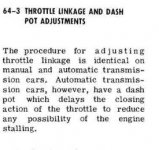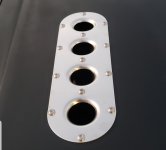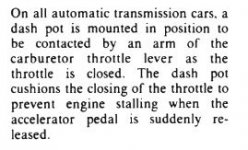D
Deleted member 28728
Guest
It is my understanding that the dashpot on the 1966 automatic Wildcat (located on the carburetor, driver side) is just for emission control — to prevent large CO emission when the engine decelerates too fast (the dash post slows the deceleration).
The dashpot on my Wildcat is broken and the engine runs just fine. So wondering whether it is worth it to replace this piece?
Are there others with broken dash pots?
The dashpot on my Wildcat is broken and the engine runs just fine. So wondering whether it is worth it to replace this piece?
Are there others with broken dash pots?




